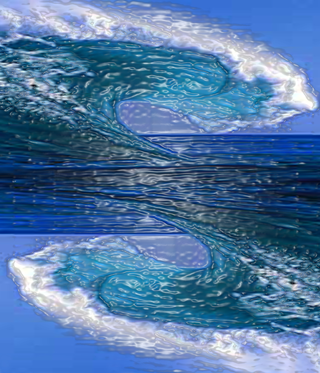Difference between revisions of "Category:Water"
m |
m |
||
| (4 intermediate revisions by 2 users not shown) | |||
| Line 1: | Line 1: | ||
| − | + | '''Water is a chemical substance with the chemical formula H<sub>2</sub>O.''' | |
| − | Water is a chemical substance with the chemical formula | + | [[File:StyleeLogoOceanSmall.png|left|frame<span title=""></span>]] |
| − | |||
| − | |||
| − | |||
| − | '''For any RorC, water is such a basic and fundamental need; it cannot be overstated in importance. Water is not only a necessity of life; it can be a storage and generation source for power. From small hydroelectric dam power to large scale tidal buoy based generators, water is a key force to be understood and managed.''' | + | WATER- |
| + | Its molecule contains one oxygen and two hydrogen atoms connected by covalent bonds. Water is a liquid at ambient conditions, but it often co-exists on Earth with its solid state, ice, and gaseous state (water vapor or steam). Water also exists in a liquid crystal state near hydrophilic surfaces. Water covers 70.9% of the Earth's surface, and is vital for all known forms of life. On Earth, it is found mostly in oceans and other large water bodies, with 1.6% of water below ground in aquifers and 0.001% in the air as vapor, clouds (formed of solid and liquid water particles suspended in air), and precipitation. Oceans hold 97% of surface water, glaciers and polar ice caps 2.4%, and other land surface water such as rivers, lakes and ponds 0.6%. A very small amount of the Earth's water is contained within biological bodies and manufactured products. Water on Earth moves continually through a cycle of evaporation or transpiration (evapotranspiration), precipitation, and runoff, usually reaching the sea. Over land, evaporation and transpiration contribute to the precipitation over land. Clean drinking water is essential to humans and other lifeforms. Access to safe drinking water has improved steadily and substantially over the last decades in almost every part of the world. There is a clear correlation between access to safe water and GDP per capita. However, some observers have estimated that by 2025 more than half of the world population will be facing water-based vulnerability. A recent report (November 2009) suggests that by 2030, in some developing regions of the world, water demand will exceed supply by 50%.[10] Water plays an important role in the world economy, as it functions as a solvent for a wide variety of chemical substances and facilitates industrial cooling and transportation. Approximately 70% of fresh water is consumed by agriculture. (source: Wikipedia) | ||
| + | |||
| + | '''For any Rebuild or Colony Effort (RorC), water is such a basic and fundamental need; it cannot be overstated in importance. Water is not only a necessity of life; it can be a storage and generation source for power. From small hydroelectric dam power to large scale tidal buoy based generators, water is a key force to be understood and managed.''' | ||
Latest revision as of 21:04, 18 June 2011
Water is a chemical substance with the chemical formula H2O.
WATER- Its molecule contains one oxygen and two hydrogen atoms connected by covalent bonds. Water is a liquid at ambient conditions, but it often co-exists on Earth with its solid state, ice, and gaseous state (water vapor or steam). Water also exists in a liquid crystal state near hydrophilic surfaces. Water covers 70.9% of the Earth's surface, and is vital for all known forms of life. On Earth, it is found mostly in oceans and other large water bodies, with 1.6% of water below ground in aquifers and 0.001% in the air as vapor, clouds (formed of solid and liquid water particles suspended in air), and precipitation. Oceans hold 97% of surface water, glaciers and polar ice caps 2.4%, and other land surface water such as rivers, lakes and ponds 0.6%. A very small amount of the Earth's water is contained within biological bodies and manufactured products. Water on Earth moves continually through a cycle of evaporation or transpiration (evapotranspiration), precipitation, and runoff, usually reaching the sea. Over land, evaporation and transpiration contribute to the precipitation over land. Clean drinking water is essential to humans and other lifeforms. Access to safe drinking water has improved steadily and substantially over the last decades in almost every part of the world. There is a clear correlation between access to safe water and GDP per capita. However, some observers have estimated that by 2025 more than half of the world population will be facing water-based vulnerability. A recent report (November 2009) suggests that by 2030, in some developing regions of the world, water demand will exceed supply by 50%.[10] Water plays an important role in the world economy, as it functions as a solvent for a wide variety of chemical substances and facilitates industrial cooling and transportation. Approximately 70% of fresh water is consumed by agriculture. (source: Wikipedia)
For any Rebuild or Colony Effort (RorC), water is such a basic and fundamental need; it cannot be overstated in importance. Water is not only a necessity of life; it can be a storage and generation source for power. From small hydroelectric dam power to large scale tidal buoy based generators, water is a key force to be understood and managed.
